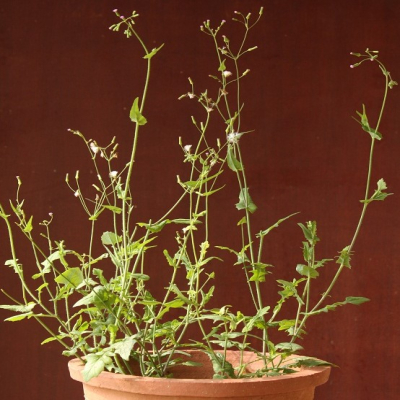Distribution and Habitat: Throughout India as a weed in cultivated fields and waste places.
Botany: A soft annual herb, 30-40cm in height, variously branched, sometimes procumbent and rooting near the nodes.
- Leaves: Simple, both radical and cauline, lyrate-pinnatifid with large terminal lobe, the basal leaf petioled, cauline acutely auricled.
- Flowers: Purplish in lax corymbose heads, reaching 1.3 cm long; peduncles very slender, nodding when young, glabrous; bracts almost equaling the corollas with scarious margins, pappus hairs white, soft, nearly equaling the involucral bracts.
- Fruits: Narrowly oblong, 5-ribbed brown achenes, 3 mm long, scabrid on the ribs.
Properties: The plant is astringent, thermogenic, sweet, antiasthmatic and antipyretic.
Chemical constituents: Flavonoids including rutin, n-hexacosanol, triacontane, ursolic acid.
Uses: It is used for curing tonsillitis, fever, infantile tympanites, otalgia, nyctalopia, pharyngodynia and juice of leaves are used in night blindness (in Travancore). It is an ingredient in Karkidaka Kanji.
Propagation: By seeds

